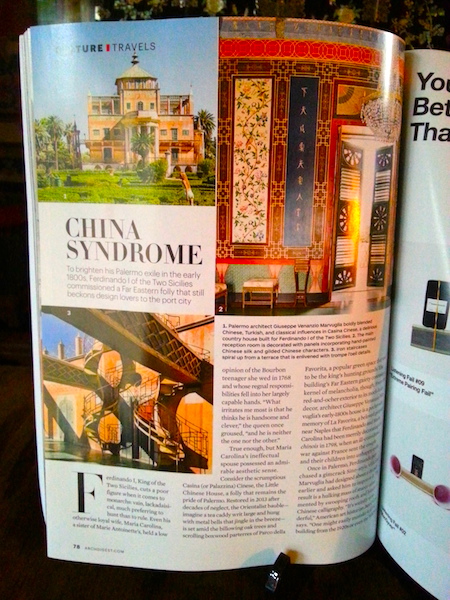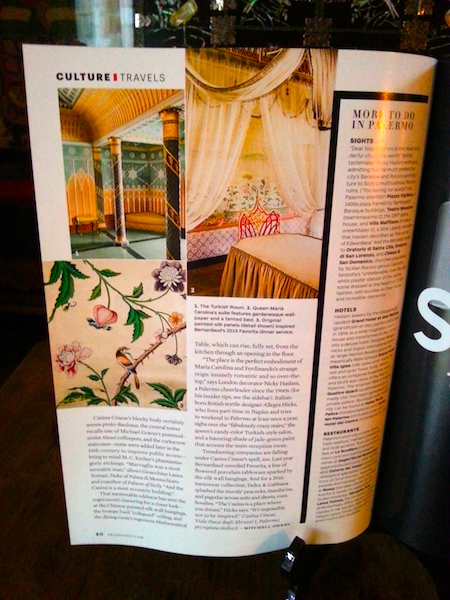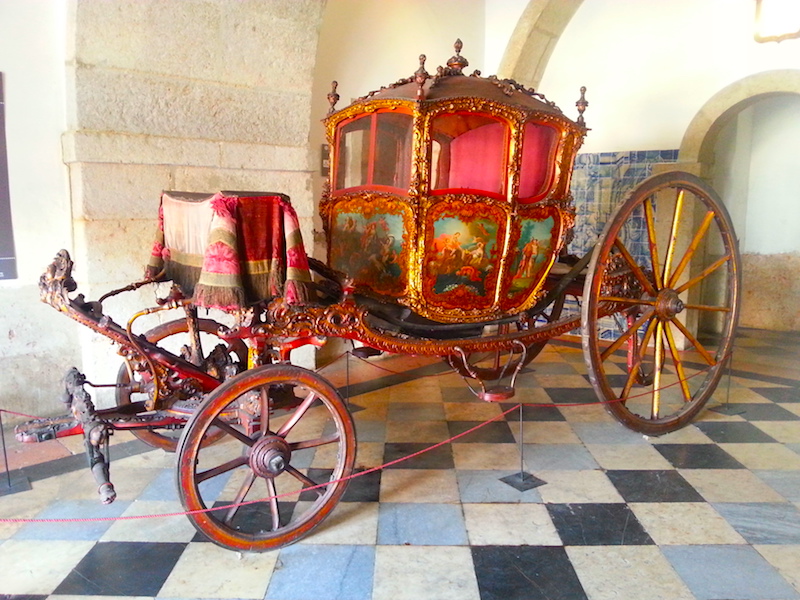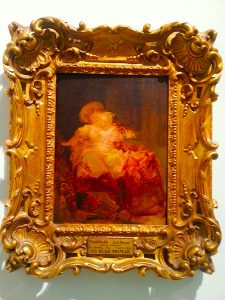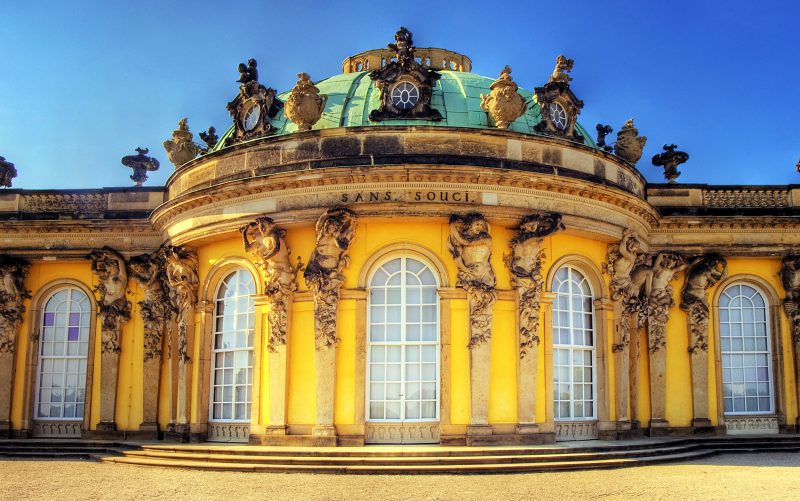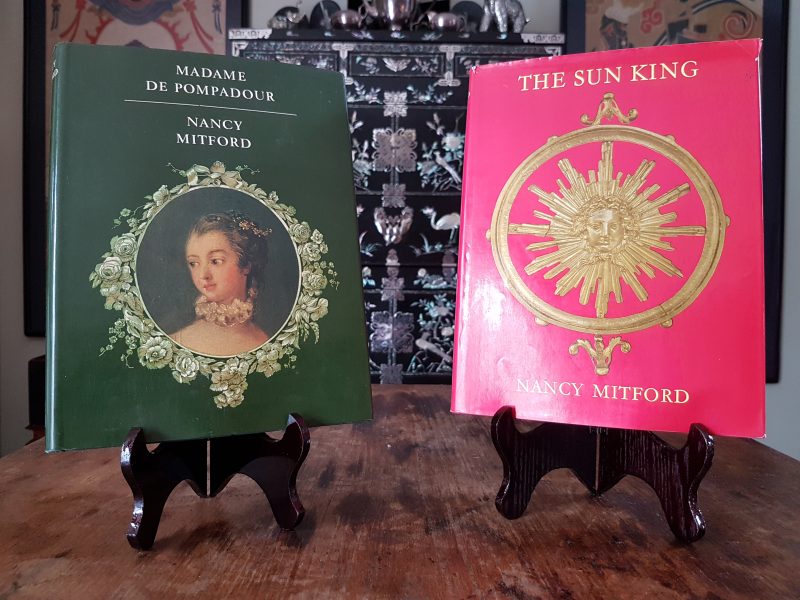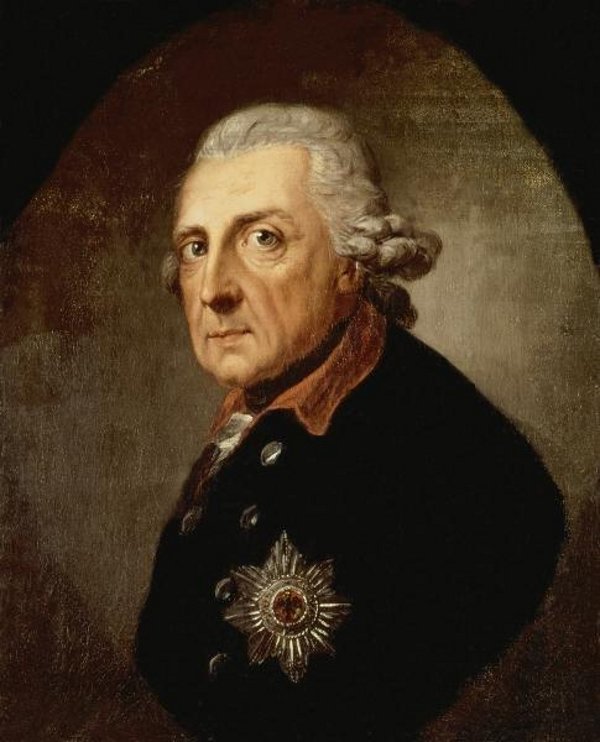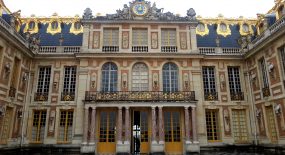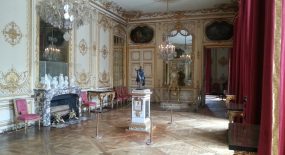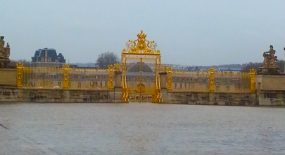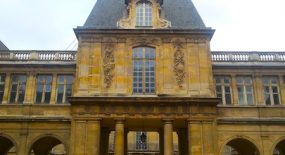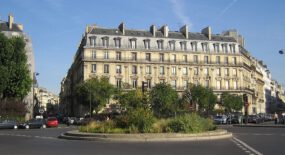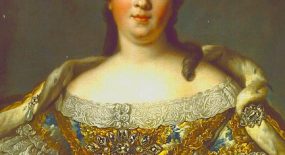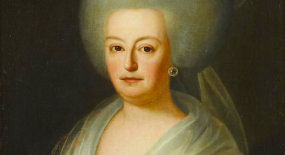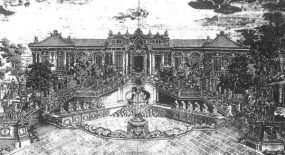Germany as we know it today did not exist in the Versailles Century (1682-1789). The second German Empire (1871-1918), which brought the various German states together into the single national structure that we now call Germany, did not come into being until many decades after the final departure of Louis XVI and his family from Versailles in October, 1789.
In the Versailles Century, Germany was more a geographical region than a country. It was part of the Holy Roman Empire, which also included the territory of the countries that we now know as Belgium, the Czech Republic, Slovakia, and Slovenia, as well as parts of present day France, Italy, and Poland.
Here is a map of the Empire in 1789:
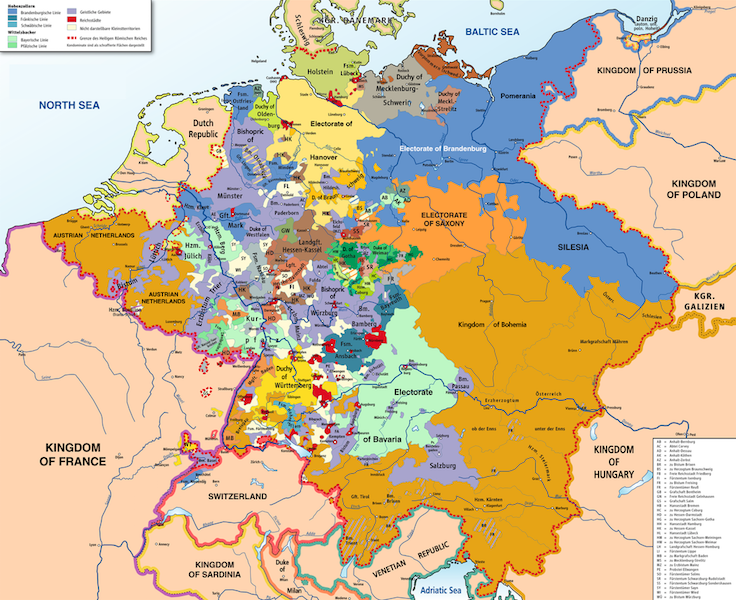
The Holy Roman Empire in 1789. Credit: Wikipedia.
By this time, the Emperor had little authority outside his own hereditary territories. As Voltaire quipped, the Holy Roman Empire was neither holy, nor Roman, nor even a real empire.







